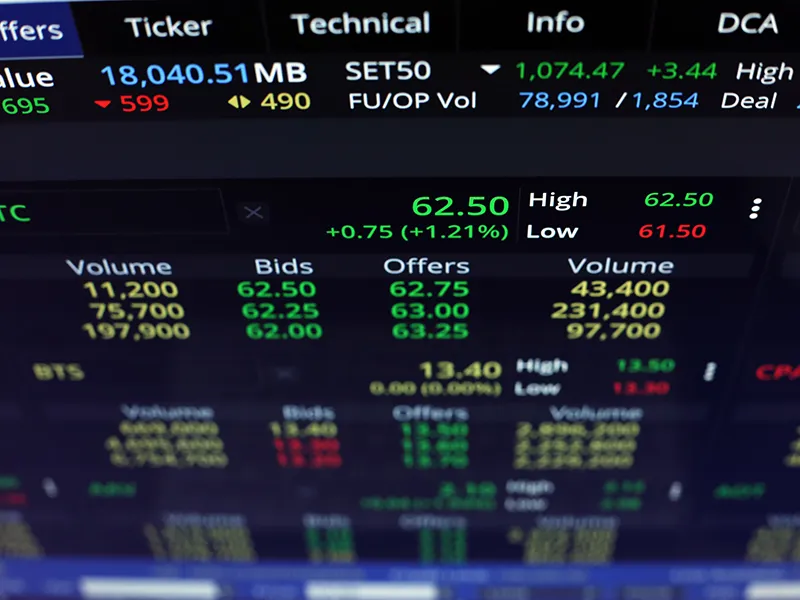
52-week high and low is a stock’s highest and lowest price per share during the recent 52 weeks. These numbers are as per the daily closing price of stocks and are not reflective of the intraday highs or lows.
Stock market investors use the 52-week high and low figures for various reasons, however, these are most commonly used as an indicator of stock volatility in the past year. It also helps investors know whether the prices of selected stocks are moving in any specific direction.
Here, we will learn more about the 52-week high and low and understand how it impacts individual stock market investors.
Understanding the concept of 52-week high and low
52-week high and low is most commonly interpreted as the highest and lowest price level of a stock in the past year. However, this is only partially true. While estimating the 52-week high and low of a stock, one must also consider the closing price.
Here is an example to understand this.
Let’s say, during a trading session, a stock’s maximum price was Rs. 1,000. At the end of the trading day, the price dropped to Rs. 9,850.
However, the high or low would be determined by only considering the closing price. In this example, the maximum price of Rs. 1,000 is irrelevant. Let’s look at the 52-week high and low mathematically to easily understand this:
52-week high = maximum (P1, P2….Pn)
P = the stock’s closing price at the end of each trading session.
Similarly, the 52-week low = minimum (P1, P2…Pn)
What are the benefits of using 52-week high and low?
The 52-week high and low figures can be helpful indicators for many trading strategies. Some of the key benefits include:
- The 52-week high and low is used by stock market traders as an important indicator for gauging the comparative present value of a stock.
- Traders can also use the 52-week high and low to check if a breakout can be expected.
- If a stock’s price rises above the 52-week high, it can be considered as an indicator of breakout and guide traders towards buying.
- If the stock’s price falls below the 52-week low, it indicates selling opportunity.
For stocks that have historically had low volatility:
- A 52-week high is considered a resistance level,
- A 52-week low is considered as a support.
Traders can thus use the 52-week price range to estimate and predict stock price movements to make informed trading decisions.
How to estimate a stock’s 52-week highs and lows?
One can easily estimate a stock’s high and low for a 52-week period using the below-mentioned steps:
- The first step is to know the specific stock that needs to be tracked. This can be found using the stock’s name or ticker symbol.
- The 52-week high and low data is usually available on all broker platforms apart from the websites of stock exchanges.
- In case the range is not available, one can look for the price chart for a 52-week period. The highest point of this chart will be the 52-week high and the lowest point will be the 52-week low.
What are the risks of using 52-week high and low for trading?
Although the 52-week high and low is often used by traders and investors as a technical indicator, there is no guarantee that the stock prices will behave as per past trends. Mentioned below are two instances that reflect a contradictory movement that is against expectations:
Instance 1 – Asset under consolidation phase
In case a stock’s price trades within a specific range:
- the 52-week high can be considered as resistance level
- the 52-week low is an indicator of support
If the stock’s price trades very close to the 52-week low, one can reasonably expect a price rise and is therefore interpreted as a buy signal. This is often considered by investors as an indicator of a consolidation phase.
Instance 2 – Asset under breakout phase
In case a stock’s price goes beyond the 52-week high, it indicates a breakout in the stock price. Following this cue:
- a trader should buy the stock when its price is beyond the 52-week high
- a trader should sell the stock when its price is lower than the 52-week low.
However, it is important to note that the price trend may not continue as expected. There can also be a breakout reversal. Seasoned traders often advise waiting for the stock’s price to move away (that is, further up from a 52-week high or dropping down from a 52-week low) before making a buy/sell decision.
Reversals of 52-week highs and lows
When a stock price comes close to its 52-week high, traders consider this as an indication of the prices being likely to fall down. Thus, many give up the opportunity to make future profits due to the belief that the chances of price rise are limited. The same is applicable for a 52-week low, in which case traders believe that the prices will rise as it is a support level.
Reversals can be used by traders as part of intraday strategy.
If the stock price goes near the high or low in a trading session, traders can expect the price trend to reverse. Seasoned traders can make use of this information in combination with other technical indicators. The use of other technical indicators can help traders predict reversal patterns, such as a rounding bottom or a descending wedge. When these patterns are seen to be coming close to the maximum or minimum price levels within a 52-week period, traders can expect the occurrence of a reversal.
In case there is no reversal, a trader can minimise losses using a stop-loss order. Many traders, however, may adopt the wait and watch strategy and make decisions only once the trend reversal is apparent.
Conclusion
The 52-week low and high may seem to be very basic and simple information. However, for traders, it can prove to be immensely helpful. Those who are new to trading and looking to adopt a simple approach can also make use of these numbers. Many analysts use this as a base for making predictions about price movements. It tells how volatile a stock is and whether it can be risky to trade in it.
FAQs
An assumption used in technical analysis of stocks is that stock prices can trend. Trend lines are used for identifying trends and confirming the same. When plotted, a trend line is a straight line that joins two or more price points and extends further, acting as a line of support or resistance.
Support and resistance are specific price points that are plotted on a chart. These fetch maximum buy or sell. A support price is a price at which more buyers are expected than sellers. Resistance price is a price at which more sellers can be expected than buyers.
In technical analysis, volume is the number of stocks of a company that are traded within a day or a given period of time. Volume is important in technical analysis as it provides affirmation on the previously noted trend directions. Traders look at both volume and price of a stock while studying stock charts.
Stock trading comes with the risk of loss. Stop loss is an important tool used by traders to limit their losses. A Stop Loss order is placed for buying or selling a stock when its price reaches a set trigger price. It helps to eliminate emotions from trading decisions. Regular brokerage may be charged for triggering a stop loss price.
To learn trading, you must get familiar with the basics of how to trade. Reading up on fundamental and technical analysis can help one to get familiar with the stock market basics.




















